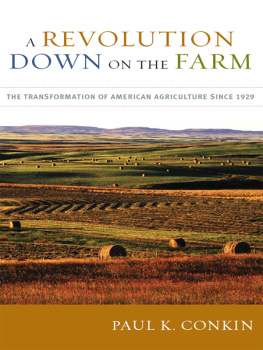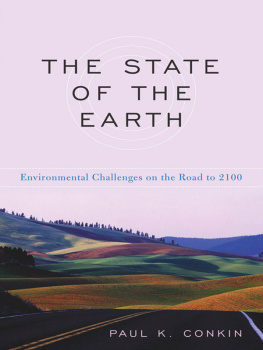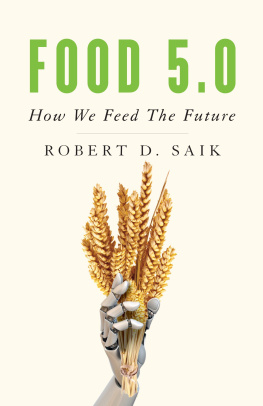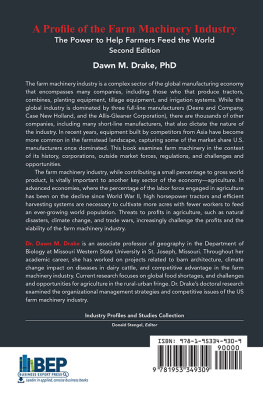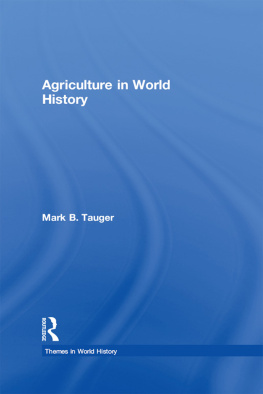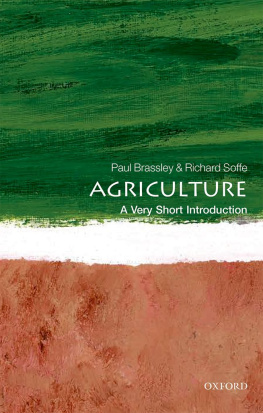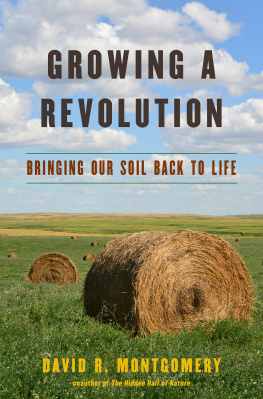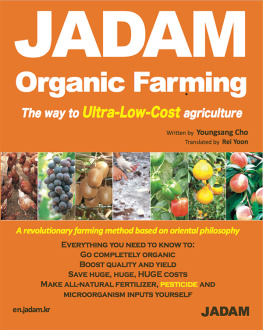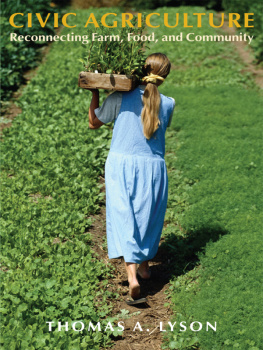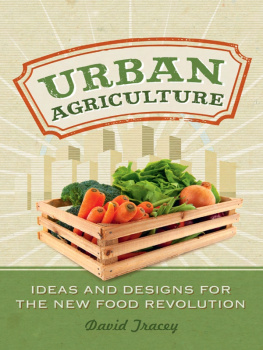A REVOLUTION
DOWN ON THE FARM
The Transformation of
American Agriculture
since 1929
PAUL K. CONKIN
THE UNIVERSITY PRESS OF KENTUCKY
Copyright 2008 by Paul K. Conkin
Published by the University Press of Kentucky
Scholarly publisher for the Commonwealth,
serving Bellarmine University, Berea College, Centre College of Kentucky, Eastern
Kentucky University, The Filson Historical Society, Georgetown College, Kentucky
Historical Society, Kentucky State University, Morehead State University, Murray
State University, Northern Kentucky University, Transylvania University, University
of Kentucky, University of Louisville, and Western Kentucky University.
All rights reserved.
Editorial and Sales Offices: The University Press of Kentucky
663 South Limestone Street, Lexington, Kentucky 40508-4008
www.kentuckypress.com
12 11 10 09 08 5 4 3 2 1
Library of Congress Cataloging-in-Publication Data
Conkin, Paul Keith.
A revolution down on the farm : the transformation of American agriculture since
1929 / by Paul K. Conkin.
p. cm.
Includes bibliographical references and index.
ISBN 978-0-8131-2519-0 (hardcover : alk. paper)
1. AgricultureUnited StatesHistory. 2. Agriculture and stateUnited States
History. 3. Agricultural productivityUnited StatesHistory. 4. Agricultural
innovationsUnited StatesHistory. I. Title. II. Title: Transformation of American
agriculture since 1929.
S441.C725 2008
630.973'0904dc22 2008016831
This book is printed on acid-free recycled paper meeting the requirements of the American National Standard for Permanence in Paper for Printed Library Materials.

Manufactured in the United States of America.

Member of the Association of
American University Presses
Illustrations
Figures
Tables
Preface
When this book reaches an audience, I will be almost eighty years old. I was born in late October 1929, at the time of the stock market crash on Wall Street. My parents were scarcely aware of these events or of their significance. What they remembered was the first major frost of the year, which whitened the farm fields around the small, three-room cabin where I was born. My first opaque memory is of being led, probably by my father, down into the meadow, where I was greeted by neighbors who were helping to cut our tobacco. Because of the location of the crop (we rotated it every year), I later determined that this was September 1932, just before my third birthday.
It is appropriate that tobacco made such an early imprint on my memory, for it was our chief crop. Because it was a crop that required various tasks throughout the year, the cycles of work on tobacco were an important marker of the passing of time: gathering and then burning brush to sterilize beds for the plants; transplanting, cultivating, worming, topping, and suckering; cutting and hanging in the barn; stripping and grading the leaves; and finally the payoffauction sales in December.
Until I was seventeen and in my final year of high school, I had assumed that I would make my career in agriculture. Four years of classes in vocational agriculture had idealized farming. But by my graduation after World War II, agriculture had begun a rapid transformation. It was clear that, at best, only a few local farmers could make a living on the rather hilly farms in our part of east Tennessee. Two of my teachers persuaded me to attend college (I was the only one to do so in my small graduating class of seventeen). Even though I spent my college summers working in the tobacco control program in my county, I knew by then that my career would be in education, not agriculture. Our small family farm survives. I now own it. I rent it to a neighbor for pasture and hay. It has been at least twenty years since anyone has grown cultivated crops, and even then it was less than an acre of land rented out for tobacco.
In what may be, because of age or health, my last book, I decided to go back to my beginnings, to the inescapable landscapes of youth, to go home again. My goal is to describe and explain the changes that have taken place in agriculture during my lifetime, to chart the distance traveled from what I experienced firsthand as a boy. Also, I want to clarify a complex storythe evolution of federal farm programs in that eighty-year span, for such policies provided the context for a revolution in agricultural productivity. It is also at the policy level that all American citizens are involved with agriculture, for it is their representatives in Congress who develop such policies.
Recently I challenged a former student who referred to the decline of agriculture in America. What could she mean by such a statement? It implies that something has gone wrong in the most critical sector of any economy. Certainly, from many perspectives, much has gone wrong. But as I hope to demonstrate in this book, agriculture has been the most successful sector in the recent economic history of the United States. The greatest industrial revolution in our history has occurred, with all its economic benefits and human costs, down on the farm, where productivity per full-time worker has increased at least tenfold since 1950.
This is a book based on memory as well as research. On one hand, I could not achieve my purposes without my own personal memories of growing up on a farm and my continued, if distant, involvement with what happened on that family farm. Throughout this book I rely on my past experience of farming and on my knowledge of the types of farming conducted by neighbors in our small community. On the other hand, I could not make sense of all those memories and experiences, place them in a broader context, or grasp their significance without having access to an enormous range of data, largely collected by the U.S. Department of Agriculture, and its subsequent analysis by economists and historians.
Agriculture, or at least the aspects of it devoted to the production of food, is the most basic of all human activities. Today, those who till the soil or tend livestock feed a world population of about 6.5 billion. Even fifty years ago the earth could not feed nearly so many people. And in fact, around 800 million hungry people are not well fed today. In another fifty years those who farm will have to feed an additional 3 billion. They will probably be able to do so, largely because of cumulative changes that occurred in my lifetime. What is sad, though, is that with each passing year, fewer and fewer local families can make a decent living on the farm. Today, my village is a far-out suburb of Kingsport, Greeneville, and Johnson City. Almost every adult has off-farm employment of some type.
In 1959 my sister married her high school sweetheart, whose family had moved from Tennessee to a dairy farm in York County, Pennsylvania. In this rich agricultural area, their farm managed to make all the needed adjustments to compete successfully. My brother-in-law remained a fulltime farm operator until his death in 1994. During those years he bought a neighboring farm and increased his acreage to 400, making his farm one of the largest in the area. In later years even this was not enough land, so he rented more from his neighbors. He was able to upgrade his dairy farm to meet all the requirements of both the Philadelphia and New York marketing districts and managed to buy all the newest equipment, including several tractors and a self-propelled combine for both corn and small grains. In other words, he was a moderately successful commercial farmer. I thus use his experiences to illustrate some of the strategies that transformed American agriculture and reduced the number of American farm operators needed to produce 89 percent of our agricultural output from around 6 million in the 1930s to less than 350,000 today.

